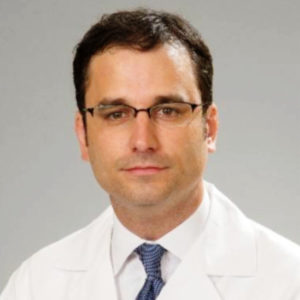
The profit margin of a vascular surgery division at a prominent health system in New Orleans was severely eroded during the COVID-19 pandemic period—despite consistent revenue generation throughout—as nursing labor costs dramatically escalated, according to a deep financial analysis carried out by a local research team.
The investigators, led by members of the academic vascular surgery practice at Ochsner Health, looked at the division’s total (across both hospital and outpatient clinics) profit margin, as well as totals for vascular surgery nursing unit expenses, nursing unit expense-per-case, vascular surgery nursing labor expenses per-patient-day and total nursing expense per-relative-value-unit (RVU), uncovering what lead author and Ochsner senior staff surgeon Clayton Brinster, MD, described as “a disturbing story of increasing total nursing expenses.” He pointed to a top line increase over the last nine months of 67% per month in total nursing expenses in the institution’s vascular surgery units. Considering that most health systems operate at slim (0 to +3%) to negative net financial margins, “this is a staggering increase,” Brinster stated.
The results were derived from seven cohorts corresponding to three-month periods dating to the start of the pandemic in March 2020 through November 2021, and compared with the 14-month period preceding the COVID-19 outbreak. The findings build on data, delivered a year ago, showing that the Ochsner vascular division recorded three-month sustained decreases in operative and outpatient clinical volume, as well as a “severe” financial loss, during the initial stages of the pandemic.
Delivering the group’s findings at the 2022 Southern Association for Vascular Surgery (SAVS) annual meeting in Manalapan, Florida (Jan. 19–22), Brinster told attendees traditional determinants of surgical net revenue—such as total cases per month, RVU per month, and Centers for Medicare and Medicaid Services (CMS) case mix index—showed no significant difference when the post-COVID cohorts were compared with the pre-COVID era. Yet, he informed the gathering, they observed a “consistent erosion of vascular surgery margins,” despite consistencies in revenue generation.
As the team delved deeper into the data, standardizing against a per-case basis, “we saw a similarly disturbing trend, with an increase of about 75% per vascular surgery case—that’s the increase in nursing costs alone,” Brinster said. System-wide, nursing labor costs in 2021 increased about 200%, or $104 million more than the 2020 number, he noted. “Don’t forget: 2020 was a pandemic year with elevated nursing costs as well. So this is a really dramatic situation.”
Brinster and colleagues went further. The pandemic inevitably will lead to about 80 million Americans either becoming uninsured or seeing their health insurance status altered, resulting in shifts in the insurance payor mix and associated distribution, Brinster explained. This, in turn, directly impacts reimbursement, net revenue and profit margin, he said. “When we looked at our own vascular surgery payor mix, we saw some shifts during the course of the pandemic: the equivalent increase in the more profitable commercial payor is about +5% on average, and the more costly lower-reimbursing Medicaid payor is about +5%. This likely will offset, but just looking at +5 and +5 does not show the whole picture, so we wanted to take it a step further in terms of standardizing our clinical cost data.”
This led Brinster et al to scrutinize total nursing expense per RVU, which he described as “perhaps the most accurate standardized measure of variation of clinical expenses over time.” In this analysis, they demonstrated “a dramatic 55% conglomerate increase” during the COVID era compared with the post period. The RVU dimension also served the purpose of making the data generalizable beyond Ochsner and capable of application across the country, he said.
Overall, pandemic peaks in the COVID positivity rate in New Orleans was closely followed by spikes in nursing labor costs that were “almost proportional to the degree of positivity,” Brinster observed. “When you consider that nurses incur a disproportionately high COVID exposure risk, that means subsequent quarantines and recoveries, requiring the use of mandatory sick time,” he said. “That then leads to decreased available labor, increased agency usage and increased costs.”
Summing up, Brinster said the pandemic had intensified “an evolving nursing labor crisis that has been going on for decades,” with the results from the Ochsner study demonstrating a “severe erosion of vascular surgery profit margin in the presence of dramatically escalating nursing labor costs, despite consistent revenue generation present throughout the pandemic.” The accuracy of the data used was made possible through a unique collaboration between the section of vascular surgery and Ochsner’s finance and decision support team, Brinster added.
Meanwhile, tackling the gravity of the nursing problem represents a mammoth task, he said. The government has taken action, pledging to invest $1.5 billion in an attempt to combat the national crisis. “The educational debt of over 22,000 nurses and nurses assistants will be absolved in exchange for a commitment to work in critically underserved areas affected by the pandemic.” Elsewhere, Brinster said, the 2022 Medicare Physician Fee Schedule will support physician practices that rely very heavily on nursing support staff, medical assistants and other clinical staff covered by Medicare, with rates for registered nurses increasing by 67% and those for medical assistants by 50%.
Ultimately, the plans seem “stopgap”—and the resulting situation “untenable”—at both the national and individual health system levels, he argued. The long-term remedy requires institutional, state and national programs to alleviate the workforce and financial crises, Brinster said. “Realistically, additional CARES Act or other type of government funding is the avenue to financial security,” he concluded. “As we struggle to recover from the ongoing pandemic, investments should really be focused on nursing education, training and recruitment—and established permanently.”











